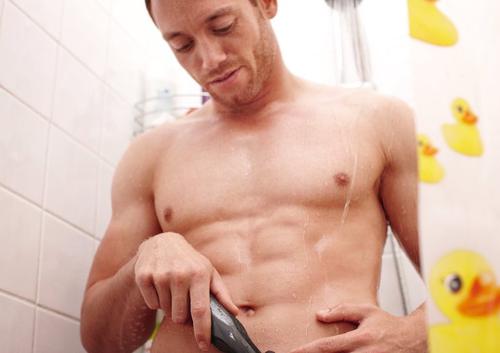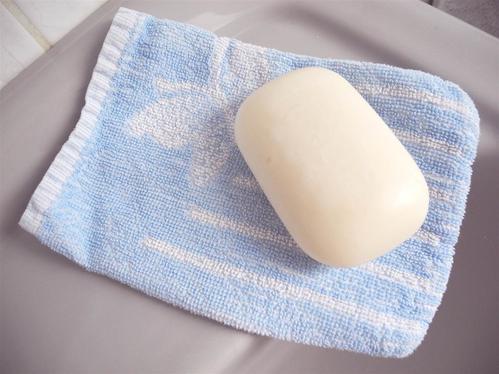Pimples in the Pubic Area: Causes, Treatment, and Prevention
Pimples on the pubic area in the male can be a huge problem. Athletes, particularly cyclists, are the ones that suffer most from this problem. Yet, they are by no means the only people to develop pubic acne. Shaving, sweating, wearing tight clothing, infections, or ingrown hair are just some of the reasons behind pimples in the pubic area.
Causes and Treatment of Pimples in the Pubic Area
There are a number of problems causing pubic acne. Here are the most common ones:
1. Ingrown hairs
Shaving against the grain of the hair can cause ingrown hair. Although, some people just seem to have a predisposition for ingrown follicles. The pimples or bumps in the pubic area are best described as reddish, slightly painful, swollen, and itchy. Ingrown hairs cause inflammation. Actually, it's the inflammatory signals that end up causing discomfort to the affected individual.
Treatment: Always dry your body properly after showering and immediately remove sweaty clothes after a workout. Don't remove any hair from the pubic area until the acne has cleared. Hair removal causes micro-traumas that increase inflammatory response in the affected area. Doing this increases the risk of microorganisms spreading to other parts of the body. Ideally, you should take a break of 6-8 weeks before resuming any hair removal activities.

2. Pubic lice
An extremely common cause of pimples on pubic area male is lice. These tiny, hard-to-get-rid-of bugs can exist anywhere on the body. That said, the lice prefer areas covered with thick hair, making the pubic area a great spot for them. These bugs, also called crabs, are usually about 2mm long and grey. Both lice and their eggs can be seen with a naked eye once they have started to live in the pubic area.
It takes around 5 days to start feeling the symptoms after contracting the lice. You'll experience itching, bluish-black spots on the pubic skin (due to bits from the lice), fever, lethargy, and feeling low. Even the presence of the lice or their eggs without any other symptoms requires treatment.
Treatment: There are plenty of over-the-counter shampoos, liquids, or gels that can help treat pubic lice. For especially severe cases, it's advised to see a doctor and get prescription drugs that can remove the lice for good. It's strongly advised to shave the pubic area once the treatment has been completed. Plus, it's wise to go over the remaining hair for any eggs that may have been left behind.
3. Folliculitis
As the name suggests, folliculitis means hair follicle inflammation. It is caused by a bacterial infection or by an increased amount of pressure from tightly fitting clothes. This is why folliculitis can be associated with pressure acne on pubic area.
The chief symptoms associated with folliculitis are itching and soreness.
Treatment: Folliculitis resolves on its own in most cases. However, if it persists, then a round of antibiotics may be necessary.
4. Mollusca
They appear like tiny bumps which may be flesh colored or reddish in appearance. The origin of these bumps is believed to be viral. Mollusca spread through sharing towels, other clothes, or by having direct skin to skin contact.
Usually, Mollusca isn't painful but they can get itchy or inflamed. They can also get caught in clothing and turn painful.
Treatment: Mollusca is usually removed from the skin by freezing it off, tying a string around it to cut the circulation off, or surgical intervention.
Prevention of Pubic Acne
- Ingrown hairs
Prevent ingrown hair by shaving in the direction of hair growth. Shave after having a shower, so the hair has softened a little or uses moisturizing shaving gel to achieve the same result. Also, you might use steroid cream to reduce inflammation.
- Pubic lice
The exact treatment of pubic acne depends on the particular cause; however, some general rules can be followed in most cases. Keep the area as clean and dry as possible. Microorganisms, like bacteria or fungi, can cause pubic acne. These microorganisms thrive in moist conditions, so try and keep the area as dry as possible to fight any intruders.

The best way to prevent pubic acne is by maintaining excellent hygiene. Clean the area with warm water and use only dermatologically tested mild soaps and shampoos. When it comes to shaving, then do it after showering or using a moisturizing shaving gel. Plus, keep the area as dry as possible.
Moisture, microorganisms, and poor hygiene are the three causes leading to pubic acne. All of these factors are easy to prevent by following regular self-care.
Getting Rid of Pimples in the Pubic Area
Getting pimples in the pubic area can be extremely painful, cause discomfort for a long duration, and be embarrassing for people in an active sexual relationship. Luckily, the treatment for pubic acne is pretty straightforward. Simple home measures or over-the-counter medication should provide enough relief in many cases. However, should the problem still persist, then a visit to the doctor is strongly advised.
YOU MAY LIKE
-
7 Steps to Help an Alcoholic
-
Five Best Ways to Prevent Stretch Marks
-
Where Do Lice Come From: Best Tips for You
-
Best Ways to Make Your Nails Grow Faster
-
Can Vitamine E Be Used for Scars?
-
How to Get Rid of Blackheads Quickly and Safely
-
Itchiness After Shaving: How to Deal With It
-
Best Ways on How to Get Rid of Double Chin
-
All You Need to Know About Getting and Caring for a Nose Piercing
-
Worried About How to Stop Hair Growth? Here Are Some Brilliant Solutions!
